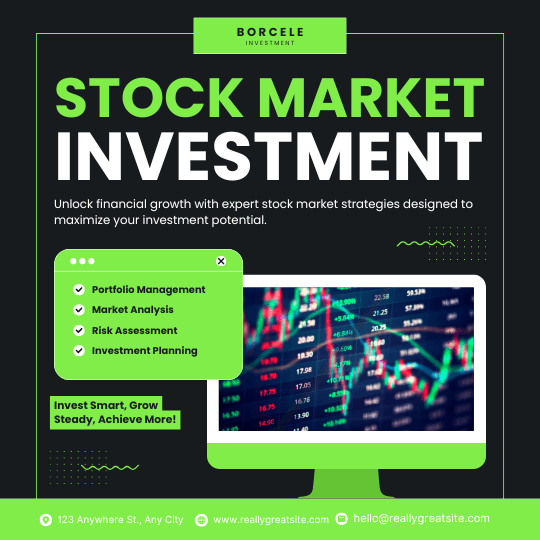Leadership: Inspiring Vision, Guiding Action, and Creating Impact
Leadership is one of the most influential forces in human progress. From businesses and communities to governments and families, effective leadership shapes direction, motivates people, and turns ideas into reality. At its core, leadership is not about authority or titles—it is about influence, responsibility, and the ability to inspire others toward a shared goal.
True leaders begin with vision. A strong vision provides clarity and purpose, helping people understand not just whatthey are doing, but why it matters. Leaders who articulate a compelling vision give their teams something to believe in, which fuels motivation and commitment. Without vision, organizations drift; with it, they move forward with intention and focus.
Equally important is communication. Great leaders communicate openly, honestly, and consistently. They listen as much as they speak, valuing feedback and diverse perspectives. Clear communication builds trust, reduces confusion, and aligns efforts across teams. When people feel heard and understood, they are more engaged and willing to contribute their best work.
Leadership also requires integrity. Trust is the foundation of any successful relationship, and leaders earn trust by acting with honesty, fairness, and accountability. When leaders model ethical behavior, they set the standard for everyone else. Integrity ensures that decisions are guided by values rather than convenience, even when challenges arise.
Another defining trait of effective leadership is adaptability. In a constantly changing world, leaders must be flexible and open to learning. Challenges, setbacks, and unexpected changes are inevitable. Strong leaders remain calm under pressure, adjust strategies when needed, and guide others through uncertainty with confidence. Adaptability allows leaders to turn obstacles into opportunities for growth and innovation.
Empowerment is a hallmark of modern leadership. Instead of controlling every detail, great leaders develop others by delegating responsibility and encouraging autonomy. They recognize individual strengths, provide support, and create an environment where people feel confident taking initiative. Empowered teams are more creative, productive, and resilient.
Leadership is also deeply rooted in empathy. Understanding the emotions, needs, and motivations of others helps leaders build meaningful connections. Empathetic leaders foster a culture of respect and collaboration, which improves morale and performance. By showing genuine care for people, leaders strengthen loyalty and commitment.
Finally, leadership is about service. The most impactful leaders see themselves as servants to their teams and communities. Their success is measured not only by results, but by the growth, well-being, and success of those they lead. By putting people first, leaders create lasting influence that extends beyond individual achievements.
In conclusion, leadership is a dynamic blend of vision, communication, integrity, adaptability, empowerment, empathy, and service. It is a skill that can be learned, practiced, and refined over time. In every setting, strong leadership has the power to inspire change, unlock potential, and create a better future for all.
Finance Careers
Build confidence to present yourself with impact.
AI Careers
Find clarity about your goals and the exact steps to achieve them.
Jobs and Careers
Turn preparation into real results and grow your career.
Jobs and Careers: Building a Path to Purpose and Success
Jobs and careers play a central role in shaping our lives, influencing not only how we earn a living but also how we define success, purpose, and personal growth. While a job is often seen as a means to meet financial needs, a career represents a longer-term journey—one that reflects evolving skills, ambitions, and values over time. Understanding the difference between the two can help individuals make more intentional and fulfilling professional choices.
A job is typically a specific role or position that provides income. It may be temporary or permanent, part-time or full-time, and does not always align with long-term goals. Many people take jobs to gain experience, pay bills, or transition between life stages. Jobs can be valuable learning opportunities, offering exposure to workplace environments, teamwork, and responsibility. Even short-term roles often contribute essential skills that support future career growth.
A career, on the other hand, is a broader professional path built over years or even decades. It is shaped by education, training, experience, and personal interests. Careers often involve progression, such as moving from entry-level roles to leadership positions, or shifting specialties within an industry. Unlike jobs, careers are closely tied to identity, motivation, and long-term satisfaction. People who view their work as a career tend to invest more in skill development and strategic planning.
In today’s rapidly changing world, careers are no longer linear. Technological advancements, remote work, and the gig economy have transformed how people approach employment. Many professionals now change careers multiple times, pursue side hustles, or combine traditional employment with freelance work. This flexibility allows individuals to adapt to market demands while aligning work with lifestyle preferences and personal goals.
Education and continuous learning are essential components of modern careers. Degrees, certifications, and on-the-job training help workers remain competitive in evolving industries. However, soft skills—such as communication, adaptability, problem-solving, and emotional intelligence—are just as important as technical expertise. Employers increasingly value individuals who can learn quickly and collaborate effectively in diverse teams.
Career satisfaction is also influenced by factors beyond salary. Work-life balance, company culture, job security, growth opportunities, and meaningful contributions all play a role in how fulfilled people feel in their professional lives. As a result, many individuals are redefining success, prioritizing flexibility, mental well-being, and purpose alongside financial stability.
Ultimately, jobs and careers are personal journeys shaped by choices, opportunities, and circumstances. By setting clear goals, staying adaptable, and committing to lifelong learning, individuals can turn everyday jobs into stepping stones toward rewarding and sustainable careers. In doing so, work becomes more than just a paycheck—it becomes a pathway to growth, impact, and long-term fulfillment.

Traveling Around the World: A Journey Beyond Borders
Traveling around the world is more than simply moving from one country to another—it is a life-enriching journey that expands perspective, deepens understanding, and creates unforgettable memories. In a world that is increasingly connected, global travel offers people the opportunity to experience diverse cultures, landscapes, traditions, and ways of life firsthand. Whether driven by adventure, curiosity, personal growth, or relaxation, traveling the world leaves a lasting impact on how we see ourselves and the planet.
One of the greatest benefits of world travel is cultural exposure. Every destination has its own customs, languages, foods, and social norms. By immersing yourself in different cultures, you gain a deeper appreciation for diversity and learn to respect perspectives beyond your own. Simple experiences—sharing a meal with locals, navigating public transportation, or participating in traditional festivals—help break down stereotypes and foster global understanding. These moments often become the most meaningful memories of a journey.
Traveling around the world also offers incredible natural and architectural variety. From mountains and oceans to deserts and rainforests, the planet showcases astonishing beauty in countless forms. Historic landmarks, ancient ruins, modern cities, and small villages each tell a story of human creativity and resilience. Experiencing these places in person creates a sense of wonder that photos and videos can never fully replicate. It reminds travelers of how vast and diverse Earth truly is.
Personal growth is another powerful outcome of global travel. Navigating unfamiliar environments builds confidence, adaptability, and problem-solving skills. Travelers learn to manage uncertainty, communicate across language barriers, and make decisions independently. These challenges often lead to increased self-awareness and resilience. Many people return home with a stronger sense of purpose, clearer priorities, and a renewed appreciation for everyday comforts.
Traveling the world can also strengthen connections—with others and with oneself. Meeting fellow travelers and locals often leads to meaningful friendships and shared experiences that transcend borders. At the same time, solo travel provides space for reflection, creativity, and personal discovery. Stepping away from routine allows individuals to reconnect with their passions, values, and goals.
While world travel requires planning, budgeting, and flexibility, the rewards far outweigh the challenges. Advances in transportation, technology, and travel resources have made global exploration more accessible than ever before. Responsible travel—respecting local cultures, supporting communities, and protecting the environment—ensures that future generations can enjoy the same opportunities.
In the end, traveling around the world is not just about seeing new places; it is about becoming a more open-minded, informed, and inspired person. Each journey adds a new chapter to life’s story, proving that the world is not only meant to be observed—but experienced.






















